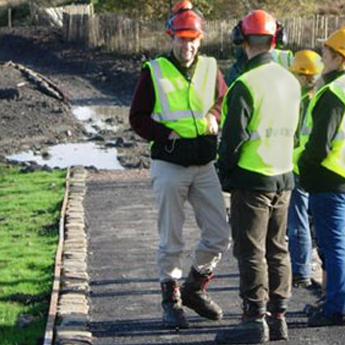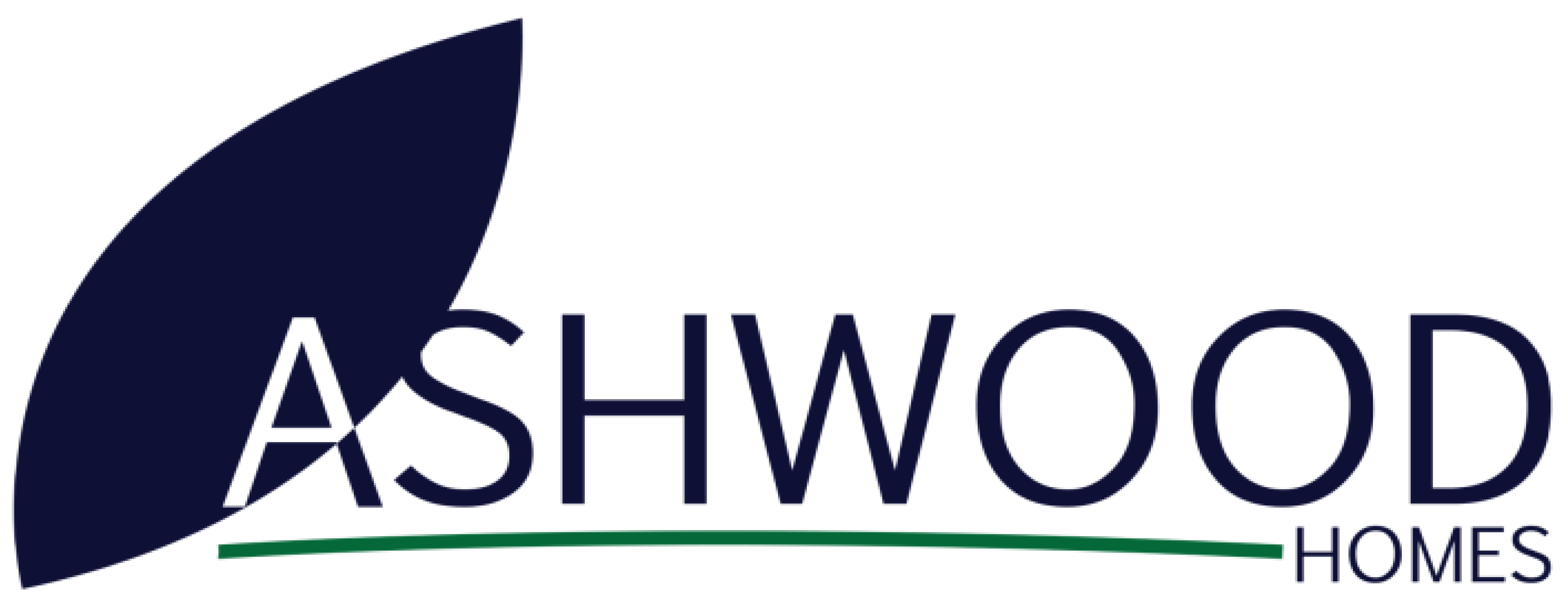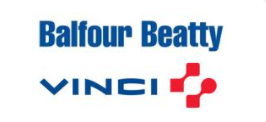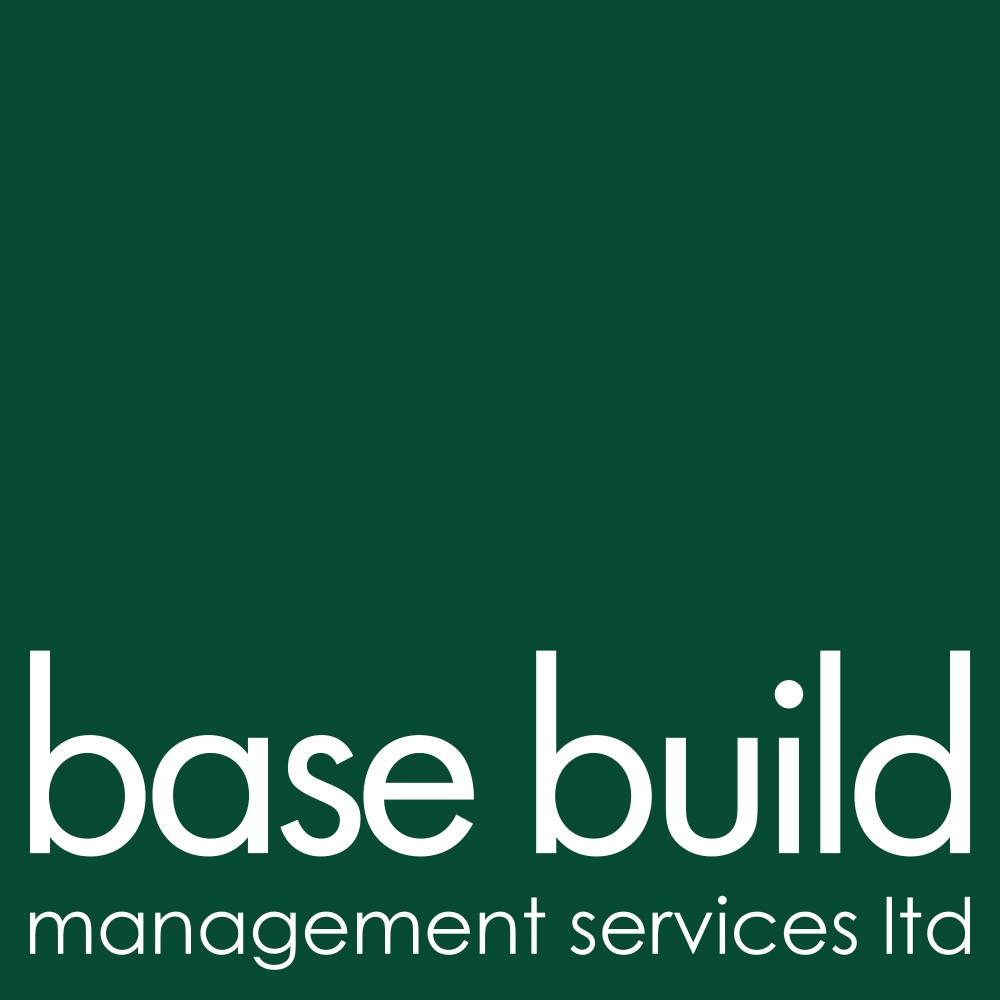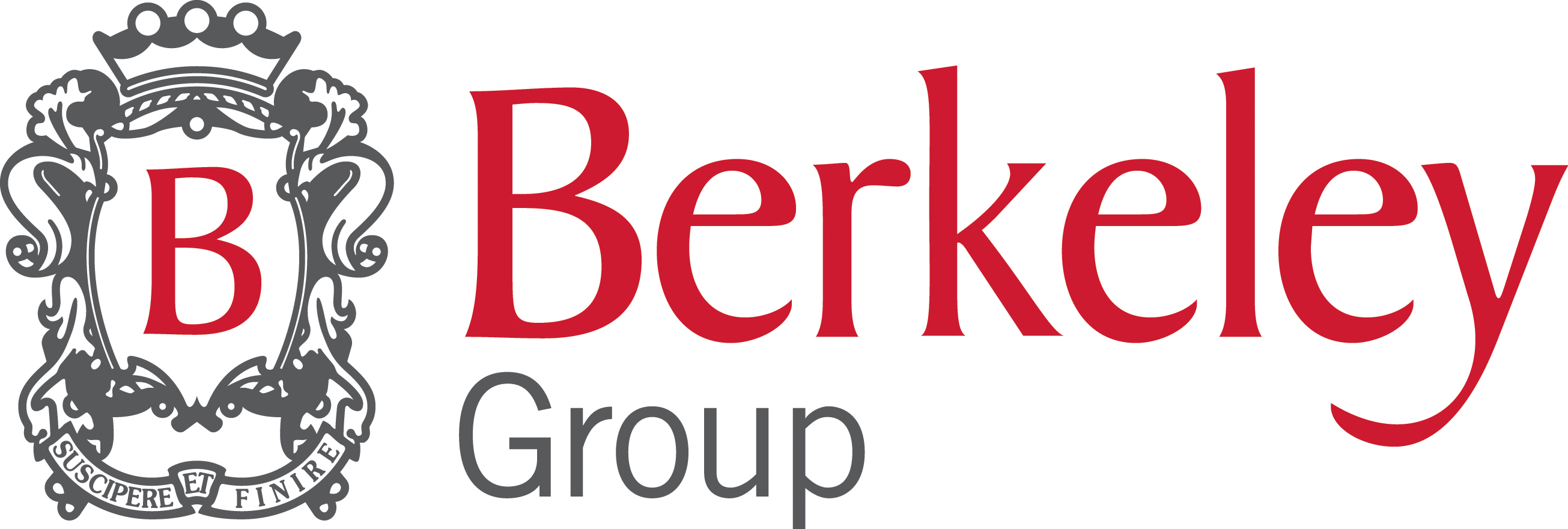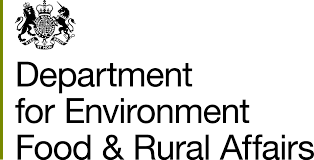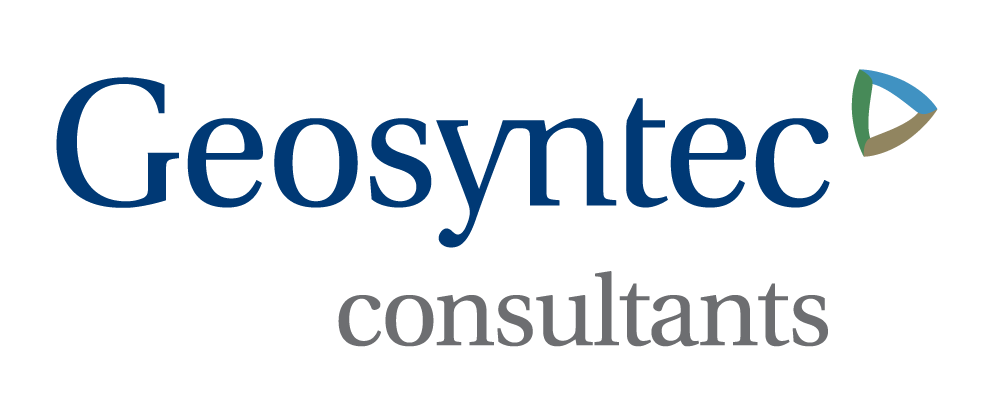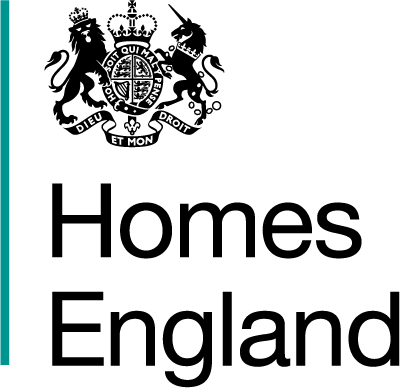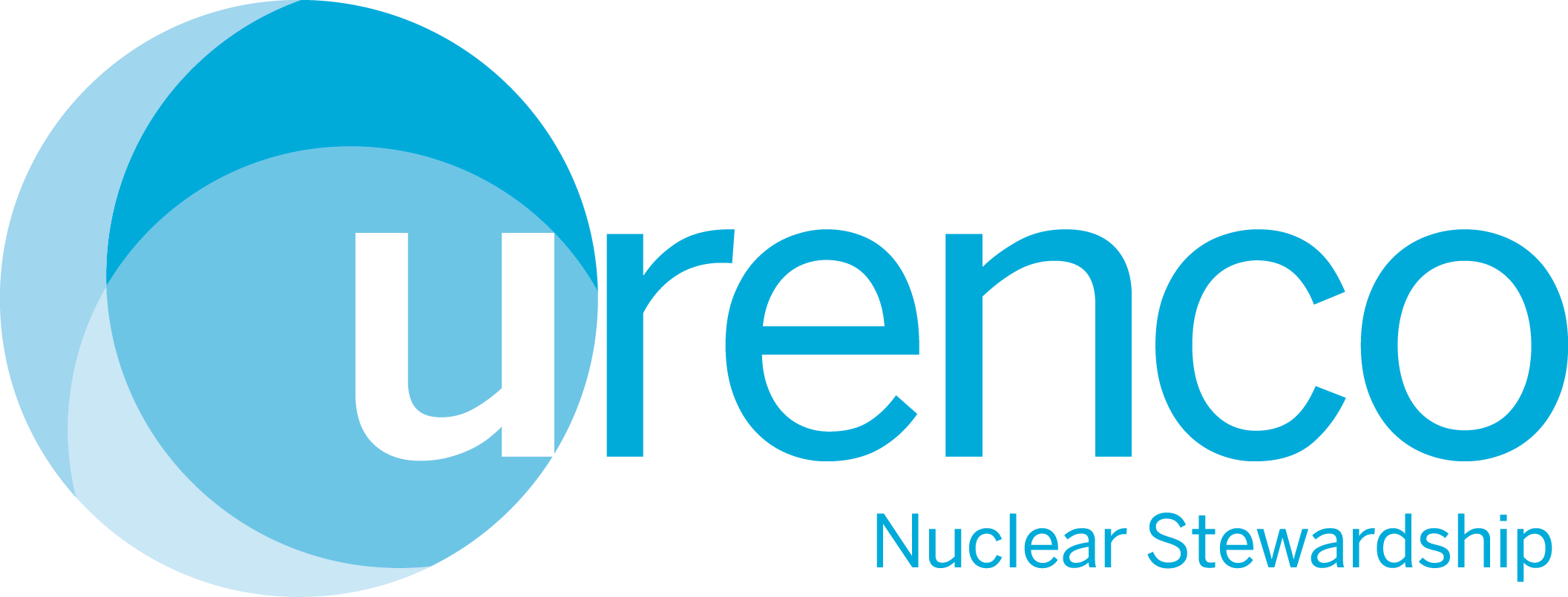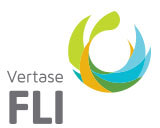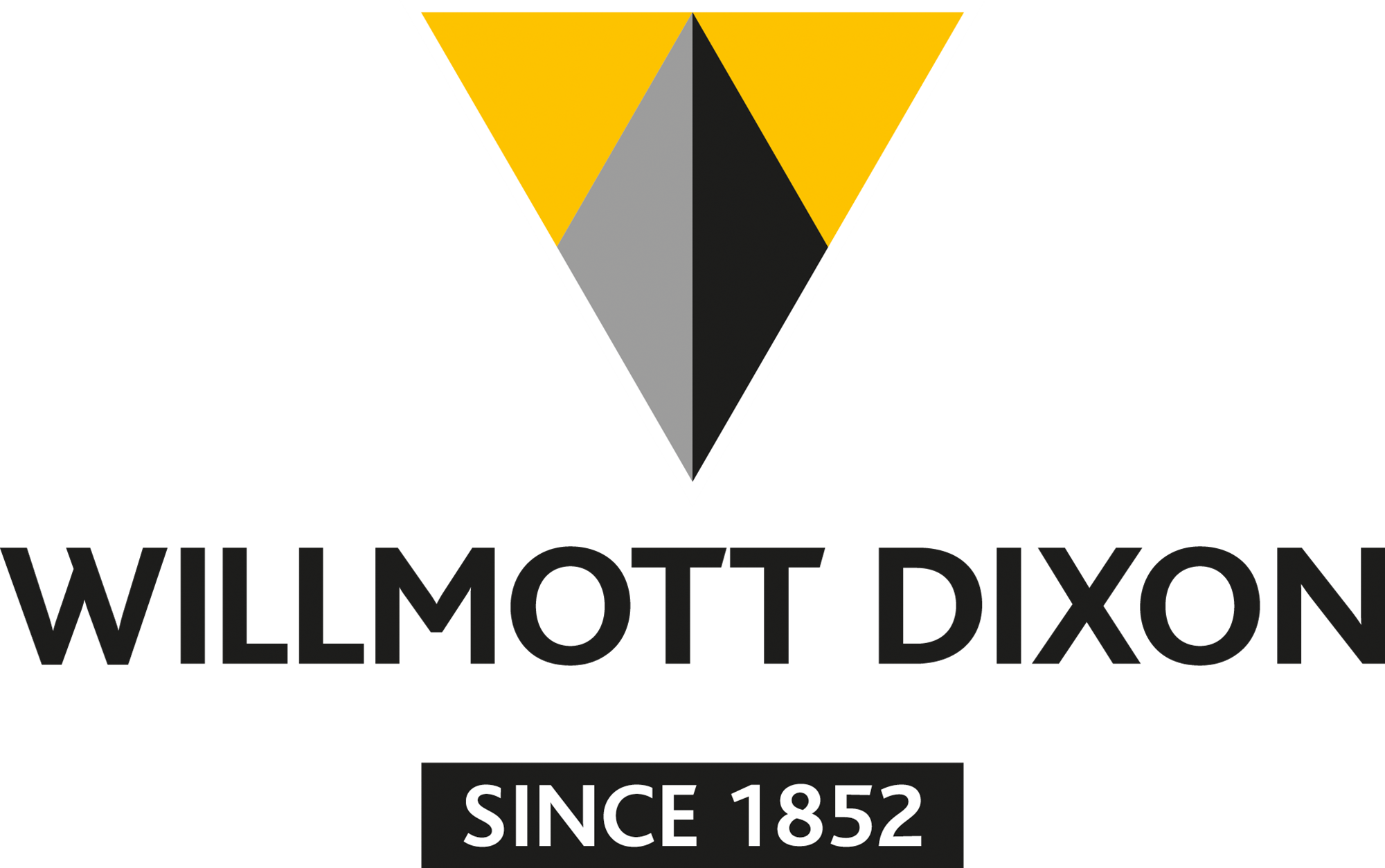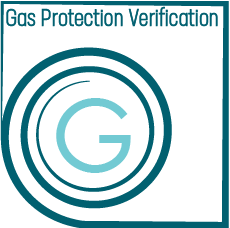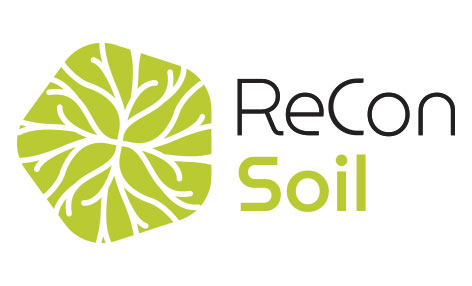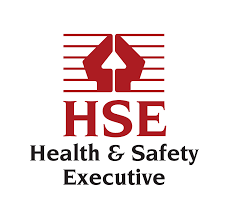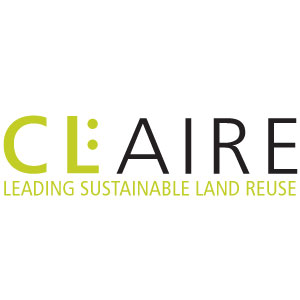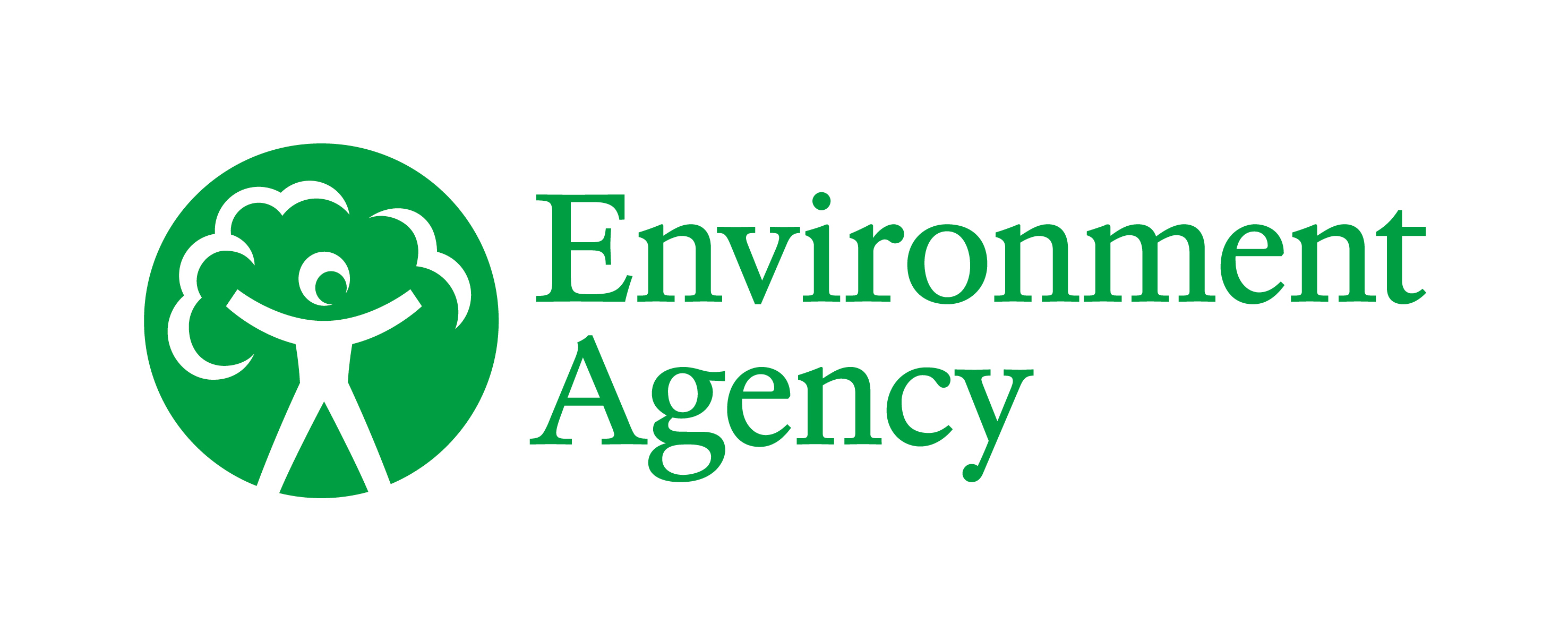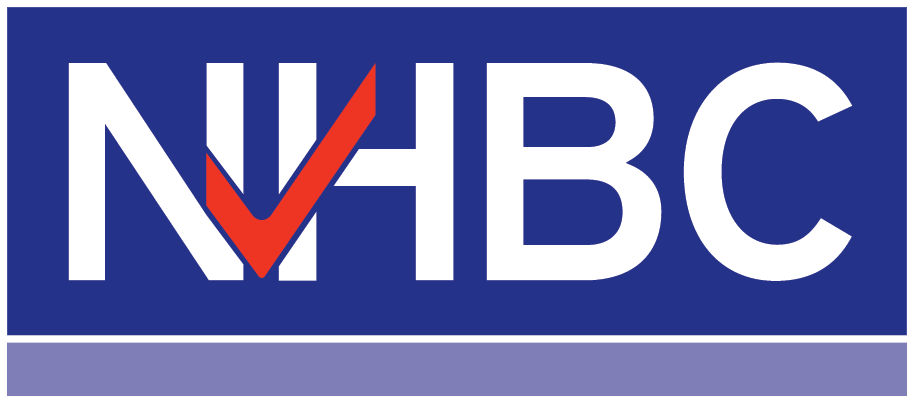
Definition of Waste: Development Industry Code of Practice
DoWCoP Version 3 sponsorship opportunity>>>
Download Definition of Waste: Development Industry Code of Practice - Main Document>>>
Download Guidance Bulletin (GB3) - Definition of Waste: Development Industry Code of Practice>>>
Terms & Conditions >>> (For use after 1st Oct 2014)
The Definition of Waste: Development Industry Code of Practice (DoWCoP) is an initiative to improve the sustainable and cost effective development of land. The DoWCoP provides a clear, consistent and streamlined process which enables the legitimate reuse of excavated materials on-site or their movement between sites with a significantly reduced regulatory burden. In many instances the DoWCoP can provide an alternative to Environmental Permits or Waste Exemptions when seeking to reuse excavated materials.
The DoWCoP enables the direct transfer and reuse of clean naturally occurring soil materials between sites. It creates the conditions to support the establishment and operation of fixed soil treatment facilities, which have a key role to play in the future of sustainable materials management. It allows the reuse of both contaminated and uncontaminated materials on the site of production and between sites within defined Cluster projects.
A full version of the updated DoWCoP is available for download above.
Success to Date
The original Definition of Waste: Development Industry Code of Practice (Version 1) was released in September 2008 and covered the reuse of materials on site and as part of a defined Cluster Projects. This allowed significant cost and environmental benefits to be realised; the DoWCoP has been applied on more than 450 projects ranging from landmark developments through land remediation schemes to more routine infrastructure and utility works.
The DoWCoP has allowed the Environment Agency to step back from the detailed auditing and quality assurance of many earthworks projects which pose little or no risk to the environment. An appropriate degree of scrutiny is still applied to higher risk schemes, but the public resources saved by this initiative allow the Agency to focus on more damaging illegal activities. In establishing a role for a “Qualified Person” the Environment Agency has enabled the private sector step up and take responsibility for implementing good practice and promoting sustainable materials management.
Requirements for Qualified Persons
The role of Qualified Persons in ensuring that best practice is consistently and demonstrably applied is key to the success of the DoWCoP. It is essential that all Qualified Persons update and maintain their knowledge of waste and contaminated land management.
Register of Environmental Benefits
The success of the DoWCoP to date and it future use and development relies on a strong portfolio of successful projects. Improvement of the DoWCoP can only be achieved on the basis of practitioner’s experiences. It therefore remains vital for the industry to provide feedback on their experiences and the benefits in using the DoWCoP. Consequently we continue to provide online pro-formas to collate this information to act as the Register of Environmental Benefits; this will also allow
CL:AIRE to feedback aggregated data back to the industry.
To this end, following use of the DoWCoP we would be grateful if you could complete the relevant of the pro-formas.
- Site of Origin Use Register of Environmental Benefits
- CLUSTER Site Use Register of Environmental Benefits
- Direct Transfer Use Register of Environmental Benefits
http://www.surveymonkey.com/s/H5RWBDS
Register of Materials
CL:AIRE is keeping a register of materials and services which fall within the DoWCoP. We aim to link material holders with service providers or organisations requiring materials in order to make the process of finding project partners more efficient.
Organisations involved in the management of development sites are urged to register key information on materials and services which fall with the DoWCoP to be held confidentially by CL:AIRE. For example - which sites are being or are due to be remediated/developed? What treatment options are in use or available in an area of the country? Where there are site imbalances of soils or fill materials? CL:AIRE will review the information provided against the register and contact organisations where we see possible project partnerships. The register is not publicly available; CL:AIRE will act to make the introductions and offer any further services as required in order to ensure successful partnerships are achieved.
CL:AIRE's independence in the market and familiarity with the DoWCoP means it is well positioned to act as a trusted administrator of such an initiative. More information is available at www.claire.co.uk/cop/register
For any technical queries relating to the Definition of Waste: Code of Practice please contact Nicholas Willenbrock at nick.willenbrock@claire.co.uk
Notes
1. The DoWCoP can provide an alternative to the use of an Environmental Permit or Waste Exemption in certain circumstances. Increase in the use of the DoWCoP is already being seen since the effective removal of widely used waste exemptions (e.g. para 9 and 19) in April 2010. This trend is expected to continue as Developers face decisions as to whether or not they require an Environmental Permit to cover the reuse of excavated materials.
2. The Steering Group is made up of site owners, industry groups, regulators, consultants and contractors facilitated by CL:AIRE. The members are:
- Clive Boyle (Chair) - Environmental Industries Commission
- Phil Crowcroft - Environmental Industries Commission
- Nicholas Willenbrock - CL:AIRE
- Matthew Whitehead - Environment Agency
- Jonathan Atkinson - Environment Agency
- Ged Duckworth (Lead Author) - GD Environmental
- Richard Boyle - Homes and Community Agency
- Peter Witherington - Home Builders Federation
- Lisa Hathway - National House Building Council
- Frank Evans - Soil & Groundwater Technology Association
- Doug Laidler - Soil & Groundwater Technology Association
- Mike Higgins and Roger Dunn - representing fixed Soil Treatment Facility operators
- Charlie Law - UK Contractors Group (UKCG)
- Peter Johnson - UK Contractors Group (UKCG)
- James Parr - UK Contractors Group (UKCG)
- Steve Livingston - The Civil Engineering Contractors Association (CECA)
3. CL:AIRE has trained over 600 individuals through it’s DoWCoP course.
4. Financial sponsorship for this version has been received from the Homes & Communities Agency (HCA), DEC UK Ltd, and Hydrock.
In 2011 we launched our Definition of Waste: Development Industry Code of Practice (DoWCoP) version 2. This featured a significant extension to the scope of scenarios which could benefit from this approach to reusing excavated materials. Since April 2012 over 259 projects have diverted approximately 5,242,128m3 tonnes of excavated material from landfill. This equates to an average of over 20,000m3 per project.
In order to maintain and improve this successful initiative, a new sponsorship opportunity has arisen for the creation of version 3 of the code. With the support from the Environment Agency and the DoWCoP steering group, CL:AIRE will lead the development for this new version. This will be a further significant development of the use and recognition of a best practice framework in ensuring quality products come to the marketplace and waste disposal to landfill is substantially reduced. There has been interest in the DoWCoP framework for soils re-use internationally, so sponsors will get wide coverage as CL:AIRE promotes the finalised version 3 with all its contacts. The aim of the project is to draft documents and undertake the relevant negotiations with the regulators and industry to introduce the potential extensions and improvements as outlined below.
- A more streamlined procedure for small quantities of material arising from recovery of soils type materials at permitted facilities (e.g. 1000m3 - 5000m3);
- An expansion of the scope of the Direct Transfer scenario to include excavated materials that are not clean or naturally occurring (with appropriate limitations);
- Allow for the reuse of manufactured soils e.g. with the addition of PAS 100 compost, under the DoWCoP if to be blended at site of production, i.e. permitted site already covered for this process under permitted treatment to create soils type products;
- Qualified Person involvement with particularly large receiver sites e.g. soil treatment facilities on former landfills e.g. threshold approach - declaration following the treatment of an agreed volume;
- Review the role of the Qualified Person relating to Verification Reports (to provide greater confidence that best practice has actually been followed in reusing the excavated material);
- Detail the minimum information requirements e.g. Desk Top Study information (particularly for Direct Transfer of clean naturally occurring soils where speed of production is key), tracking system, delivery ticket.
- Provide greater context of where the DoWCoP fits with other documents / guidance e.g. schematic showing WRAP Quality Protocol / recent Defra guidance on Definition of Waste on “by products”, exemptions and Standard Rules Environmental Permits. Highlight other mechanisms for reuse other than in accordance with the DoWCoP;
- Provide background and further explanation to Watch-point 15;
- Expand on the definition of clean;
- Explain how topsoil is sold as a non-waste; and
- Storage of excavated material at a source site or alternative facility with no identified certainty of use e.g. good quality material for which a beneficial use would be reasonably expected to be found (including suitable timeframes).
CL:AIRE expects the development work for the above to be carried out throughout 2013. In order to begin this process sponsorship for this work is required upfront. CL:AIRE no longer receives Government funding, as such, project funds must be raised in advance of work commencing.
If your organisation is looking to link to and gain brand coverage with a successful, widely used initiative we hope this offer is of interest. Perhaps your organisation has benefited from using the DoWCoP and you’d like to support its ongoing administration and development. CL:AIRE is not able to support the ongoing maintenance and development of this initiative without the support of the industry. If the DoWCoP is valuable to your organisation please take the time to consider this opportunity.
The Offer -
All previous versions of the DoWCoP have carried branding of organisations who have provided financial assistance. This version will be no different, except that CL:AIRE intends to make supporters logos even more prominent.
Version 2 of the document has been downloaded from the CL:AIRE website nearly 7,000 times since its launch. A further print run of 1,000 copies have also been circulated. There are a number of supporting documents associated with the DoWCoP such as Guidance Bulletin 3 which has been download 1,000 times in the last year. Finally, sponsor logos are also given coverage on all DoWCoP training materials. Since the launch of version 2, CL:AIRE has trained over 300 professionals from the industry.
For this new version of the DoWCoP CL:AIRE requires a minimum of £50,000 sponsorship. This will allow the necessary work to be carried out writing the new version but will also contribute to the ongoing cost of administering the initiative. To achieve this amount CL:AIRE proposes 5 branding berths be made available with exclusivity provided to organisations from different sectors e.g.
- x1 berth available for a consultant
- x1 berth available for a remediation contractor
- x1 berth available for a house builder
- x1 berth available for a civils contractor
- x1 berth available for a government / industry leading organisation or department.
The above suggestions are not fixed, other companies from other sectors may wish to sponsor; this is to illustrate how exclusivity of the branding opportunity will be maintained.
Each berth will be available for a total of £10,000 +VAT. In return for this amount, sponsoring organisations will receive.
- Their logo’s prominently and located centrally on the front outer cover of the final PDF document;
- Acknowledgment inside PDF document and a one page A4 advert or comment section within the final version of the document;
- Logo branding on supporting literature e.g. new guidance bulletin 3;
- Logo on PDF programme promoting the one day training course;
- Logo in the PowerPoint presentation delivered to delegates on the one day training course (planned: 9 courses per year, ~ 15 delegates per course);
- Logo with URL to sponsoring organisation’s website on related pages on CL:AIRE website (approx 4 pages + event calendar pages promoting the DoWCoP training course);
- A PDF personalised certificate of sponsorship; and
- Trade press publicity from CL:AIRE press releases announcing the launch of DoWCoP version 3.
Sponsorship berths will be allocated on a first-come-first-served basis; if this is of interest to your organisation we encourage you to register an expression of interest promptly with nick.willenbrock@claire.co.uk
CL:AIRE plans to run a DoWCoP related conference in 2013 which as well as providing information on the initiative and its use, will aim to raise further funds. Sponsorship opportunities will be made available relating to this event. Other large, one-off guidance documents might be developed throughout the lifetime of DoWCoP version 3. This agreement would not cover such ancillary documents. Sponsoring organisations will be kept appraised of developments relating to the initiative.
Below is a mock-up of the potential front cover of DoWCoP version 3 to give an indication of the level of coverage expected.
The Definition of Waste: Development Industry Code of Practice. Becoming a Qualified Person - Training and experience requirements
Download Qualified Person Project Declaration>>>
To become a New Qualified Person please complete the registration form here>>>
To renew your Qualified Person Subscription please complete the form here>>>
To pay for your subscription online please click here>>>
CL:AIRE continues to offer its one-day training course for the Definition of Waste: Development Industry Code of Practice (DoWCoP). This course is mandatory for all new Qualified Person applicants and is also particularly useful for those wishing to implement the use of the DoWCoP. It also useful for those wishing to update their knowledge or individuals wanting a better understanding of the DoWCoP.
The scheduled dates and locations for this course will be confirmed shortly.
Requirements for becoming a Qualified Person
Corporate Authority
The applicant must be authorised to sign on behalf of their company in this area of activity.
Professional Standing
The applicant must have chartered status, awarded by and recognised with a body that sets restrictions on areas of activity and has the capacity to apply sanctions in the event of unprofessional conduct.
Relevant Qualifications
It is expected that the applicant will have academic qualifications relevant to the area of activity.
Experience
The application must have a minimum of 5 years experience and be currently engaged in the planning or oversight of remediation projects, or projects involving site materials management. Evidence of this experience is to be provided by means of a detailed CV with references.
Independence
The Qualified Person should not be directly involved in the management or execution of the project.
Training
The applicant must have attended a recognised minimum one-day Definition of Waste: Development Industry Code of Practice training course. Evidence of attendance will be provided by an Attendance Certificate.
Not barred from acting
The applicant must not have any individual convictions under waste or environmental legislation, or be barred from acting in the capacity as a result of previous activities in the role of the Qualified Person.
Registered with CL:AIRE
All Qualified Persons are required to register with CL:AIRE on an annual basis. An annual fee of £150 is required in order to maintain the public register and support the ongoing administration of the DoWCoP. Renewals are carried out at the start of each calendar year. Individuals who register later in the year will pay pro rata up to the year end.
In association with:
Materials Management Plan (MMP)
Download Materials Management Plan (MMP) Form>>>
Download Materials Management Plan (MMP) Form Oct 2014>>> (For use after 1 Oct 2014)
This form should be completed once the lines of evidence have been marshalled in relation to suitability for use, certainty of use and quantity required. The answers to the questions posed within this form together with the supporting information will constitute the Materials Management Plan and must be provided to the Qualified Person.
Cluster Guide
Download Cluster Guide 2012>>>
The Cluster approach is designed to facilitate the remediation and / or development of a number of sites that are located in relative close proximity and share a decontamination / treatment facility located on a single site – the Hub site.
Cluster projects have three guiding principles in that they are:
- Temporary – operate only as long as the sites defined within the Cluster are being remediated / developed.
- Local – demonstrably appropriate in terms of geographical distance, relative savings, practical issues etc. for each of the participating sites.
- A more sustainable way of developing land.
The Cluster concept has been proven at the commercial and full-scale and subsequently at a number of sites since the Definition of Waste: Development Industry Code of Practice (DoWCoP) was launched in September 2008. The lessons learnt from those projects have been used to develop this guide which will aid others in identifying the various benefits, challenges and solutions in establishing a Cluster and how to make it work effectively.
The guide introduces the terms “Hub site”, “Donor site” and “Receiver site” as a way of identifying and distinguishing whether sites in a Cluster are acting, respectively, as the treatment Hub, donating wastes or materials to be treated / reused or receiving treated materials for use within a development. Sites can act as both Donor and Receiver sites.
This guide sets out the various indicative roles and responsibilities of people and organisations within a functioning Cluster. The inter-relationships of different parties and the documentation that has to be produced are illustrated by comparing the documentation associated with a Cluster project and a standalone remediation project, which is not dissimilar.
Stakeholders may benefit from Cluster in different ways as discussed within this document. The main benefiting parties could include:
- Landowners
- Developers
- Contractors
- Consultants
- Local authorities
- Local communities
This guide also identifies the issues associated with the conceptualisation of a project and the considerations that will influence the choice of remediation technology located at the Hub site.
Town and Country Planning issues have been reviewed and different scenarios are illustrated. The need for flexibility in relation to relative timing of import, export and phasing of operations has been highlighted. This is seen as being a particularly important factor if the true sustainable benefits of operating Clusters are to be realised.
Cluster represents a significant step forward in terms of options for managing land contamination and developments. The concept is explicitly covered in “The Definition of Waste: Development Industry Code of Practice (CL:AIRE Version 2 March 2011)” which is freely available at www.claire.co.uk/cop and is referred to as the “CoP” within this document. The DoWCoP provides a mechanism to identify that excavated and treated materials have ceased to be waste and hence can be used at Receiver sites within a Cluster without the need for an Environmental Permit or waste exemption.
The different contractual arrangements that may have to be entered into, dependent on the Cluster make-up are identified and explained, as well as insurance products that are currently available in the market place.
The lessons learnt from previous projects illustrate that whilst all of the pre-operational matters can be largely addressed by good preparation and planning, the true potential of Cluster will rely on all stakeholders recognising the importance of flexibility, particularly in relation to timeframes. Appropriate risk-based decision making will also be critical to unlocking the true potential of the Cluster concept.
Code of Practice FAQs
These FAQs have been developed to aid those using the Definition of Waste Code of Practice (DoWCoP) and may be subject to change periodically. Therefore, reference to the most up to date version on CL:AIRE’s website is recommended.
Latest update and summary of changes:
1. The current version of the DoWCoP was launched on 30th March 2011. It features an extended scope of scenarios which can now be applied -
‘This document applies to both uncontaminated and contaminated material from anthropogenic and natural sources excavated
- For use on the site from which it has been excavated, either without treatment or after on-site treatment as part of the development of that land (i.e. Site of Origin scenario)
- For use directly without treatment at another development site subject to the material meeting the requirements set out in Appendix 2 (i.e. Direct Transfer scenario)
- For the use in the development of land other than the site from which the material has been excavated, following treatment at an authorised Hub site including a fixed Soil Treatment Facility acting in this capacity (i.e. Cluster Project scenario)
- Or combination thereof’
2. A template Materials Management Plan has been prepared for use on all DoWCoP projects. The template is available from the CL:AIRE website – www.claire.co.uk/cop.
General Questions
(Q1) Which team in the Environment Agency will carry out the Audits?
Audits will be arranged by the relevant National Environment Agency team and carried out with assistance of local Area staff. Staff carrying out audits will be fully conversant with relevant waste legislation and the content and aims of the DoWCoP. For consistency purposes any queries on interpretation including issues such as bulking and consolidation will be resolved in consultation with the National team.
(Q2) How long after submission of a Declaration might the Environment Agency carry out an audit?
Concern was expressed that if undertaken 5 years after completion and some problem is found, then there may be houses on what might be classified as a waste site.A: Most audits will be undertaken within 6 months of the submission of a Declaration. However audits can be triggered at a later date if complaints are received about a site or a pollution incident is subsequently reported. A risk based decision will be taken as to whether to retrospectively enforce the requirements for an environmental
permit if problems are found at any site.
(Q3) Can the DoWCoP be applied to fixed Soil Treatment Facilities?
Yes. The Soil Treatment Facility can either act as part of a pre-defined Cluster project or approach the Environment Agency again to gain approval for further transfer of stockpiled, treated materials, via the establishment of new Cluster projects. The simplest form of project is likely to be the most appropriate for such operations i.e. a 2 site Cluster with the Soil Treatment Facility acting in the capacity of a Donor/Hub site. See section A3.3 Fixed Soil Treatment Facilities of the Version 2 of the DoWCoP.
(Q4) Could the DoWCoP be used to bring material such as Pulverised Fuel Ash (PFA) on to a site, for example a former mine.
Potentially: The Pulverised Fuel Ash would have to constitute madeground and be excavated and re-used as earthworks materials as part of a defined Hub and Cluster development. However the filling of mineral voids is commonly regarded by the Environment Agency as a landfilling activity which would rule out the use of the DoWCoP.
(Q5) What about the case where impact to groundwater remains after human health issues are dealt with, but Environment Agency takes the view that it is unreasonable to require further work (e.g. aquifer already compromised). Would the material strictly not be suitable for use?
Suitability is determined on a site by site basis with reference to the achievement of agreed risk based targets which take into account the environmental setting of the site.
Q6) Why does the methodology behind the assessment of “suitability” differ when considering the three scenarios of onsite use, direct transfer and hub & cluster within the DoWCoP? Why isn’t suitability defined by a simple risk assessment at the site of use?
Article 14 of the Waste Framework Directive requires the necessary measures to be taken to ensure that waste is recovered or disposed of without endangering human health and without using processes or methods which could harm the environment, and in particular:
a) without risk to water, air or soil, or to plants or animals;
b) without causing a nuisance through noise or odours;
c) without adversely affecting the countryside or places of special interest.
In assessing the suitability of materials (and hence waste status) one has to consider not only the circumstances in which they arise but also the circumstances in which they are to be used. When considering “site of origin” scenarios, an acceptable level of risk to the environment is defined in the context of the sites current/baseline condition. This enables the re-use of otherwise contaminated materials on the basis of waste minimisation; land quality is being maintained or enhanced, thus achieving the objectives of the Waste Framework Directive.
When considering the importation of foreign materials to a site it is important to ensure that the materials will be used in a way that achieves the same goals. If materials were imported to a site so that new hazards were created, or existing hazards increased the net effect would be to increase the level of risk posed to human health and the environment at that site. This would be contrary to the objectives of the waste framework directive. It should be remembered that land-use can and does change over time meaning that any new hazards created by importation of materials will have to be dealt with in due course. The net effect is that land quality would have been degraded rather than maintained or enhanced; this is not considered sustainable.
The differential between the costs of disposal of hazardous vs. non-hazardous materials also make it attractive to criminals to undertake “sham recovery” operations whereby the development itself is secondary to the profits to be made in circumventing legal controls on disposal. By providing clear guidance in the DoWCoP regarding such matters the Environment Agency hope to dissuade its potential exploitation in this manner.
Q6 a.) How should I approach the assessment of chemical suitability in Cluster Projects given the restrictions imposed on reuse highlighted in Watchpoint 15?
The following simple approach can be used to ensure that you do not inadvertently introduce new hazards to a receiver site OR significantly increase the hazards that are already present:
1.) Define the quality of the material you need at your receiver site by reference to a site specific risk assessment as normal. Remember that in order to be suitable, any materials must not cause pollution or harm to human health or the environment (including controlled waters) at the location at where they are to be used.
2.) Check whether the values derived would fall above the current thresholds used for hazardous waste classification purposes.
3.) If any of the values are above these thresholds then alter the materials specification to limit the allowable levels of these substances to below the thresholds.
In most cases this conservative approach will be sufficient to prevent the importation and reuse of materials in a way that the Regulator may consider to be “Sham Recovery”. It should also prevent the inadvertent creation of any significant problems for any future regeneration of the site.
In the very unlikely event that the concentration of some substances at your receiver site are already above the hazardous waste classification thresholds but are not posing any unacceptable risks (as demonstrated by your site specific risk assessment agreed with the regulators), then raise the issue with the Environment Agency when seeking approval for the Cluster Project. In exceptional circumstances you may be allowed to import materials with levels of substances equal to or below the levels already existing at the receiver site. To do this the Environment Agency will need to be wholly satisfied that the proposal is not unnecessarily substituting hazardous materials for non-hazardous alternatives (i.e. Sham Recovery).
(Q7) Why is there not a short form Materials Management Plan for small volumes of lower risk materials?
The new Materials Management Plan form is designed to be used for all scenarios covered by the DoWCoP. Once used it will become clear that not all fields within the form need to be completed for every scenario.
(Q8) Why is the term ‘adequate site investigation’ used over ‘ground investigation’?
Version 1 of the DoWCoP stated “comprehensive Site Investigation” which was considered too onerous for every site, for example at some sites no investigation would be necessary. However, in other situations more than just a Ground Investigation will be required e.g. Desk Top Study, therefore the steering group suggested the term “adequate Site Investigation” as an appropriate compromise.
Aggregates Protocol
(Q9) The DoWCoP scope excludes “excavated infrastructure material such as pipework and storage tanks” Does this exclude the use of excavated infrastructure such as road bases, car parking areas etc…? And if this is the case will operators need to use the DoWCoP and the WRAP Aggregates Quality Protocol on the same site?
The Environment Agency’s concerns centre on potentially polluting substances that can be associated with infrastructure e.g. pipes and tanks that may have residue products within them, concrete with adhered asbestos etc…. Other excavated infrastructure can be reused under the DoWCoP on the site of origin and receiver sites within a CLUSTER. If fully complied with the Aggregates Protocol allows for inert materials to be used at any site, including those currently not within the scope of the DoWCoP.
(Q10) Why did a DoWCoP emerge from this process rather than a BREW Quality Protocol for soils?
BREW looked at this, but it was felt that the inherent multifunctionality elements of the programme contradicted the Governments suitable for use and risk based approach. The recommendation from that work was to build upon the Environment Agency guidance “Definition of Waste: Developing on greenfield and brownfield sites”, which the DoWCoP does. In effect, there is no single definition of what is "clean" that can be provided for soil that would allow it to be used at all sites and in all circumstances, unless of course it is inert and linked to a Quality Protocol.
Qualified Person (QP)
(Q11) I trained and was registered as a Qualified Person under version one of the Definition of Waste Code of Practice. Can I re-register as a Qualified Person for the current version of the DoWCoP.No. Individuals will, as of January 2013 be expected to attend the one day training course again. This is required due to the amount of time which has passed since the versions changed.
(Q12) For the on-site reuse scenario the Qualified Person submits the Declaration to the Environment Agency and then excavation begins. For Cluster projects the Environment Agency still wants to agree the point that treated materials cease to be waste on a project by project basis.
a. At what point in the process should these discussions take place?
At project planning stage.
b. Who is the point of contact?
Enquires should be directed to the local Environment Agency office in the first instance. Where a Cluster project straddles Environment Agency area boundaries then the area where the Hub site is located should be contacted. Assistance will be given by NTS – Geoscience team if required by the local team
c. What information needs to be submitted to get this agreement?
A Material Management Plan covering the sites concerned which contain the lines of evidence such as Hub site permit, contractual inter-relationships and responsibilities, mass balance calculations etc. (also see paragraph A3.14 - DoWCoP Version 2)
(Q13a) Why is there a need to consult with the Environment Agency and Local Authority if contamination is not suspected i.e. a project progressed via Route B of the DoWCoP. Such consultation did not exist prior to the publication of the DoWCoP and it adds an administrative burden on to the regulators.
Given that there is no suspicion of contamination there should be no need to consult. The Qualified Persons should satisfy themselves prior to signing the Declaration that there is evidence to support this e.g. Desk Top Study.
It will be good practice for the Qualified Person to include a clear request to see all relevant documents and to record those documents provided to them that formed the basis for the signed Declaration. It would be prudent to have a “full disclosure” clause in any contractual agreement between the Qualified Person and the person commissioning the works.
Under Route B – Direct Transfer – would there now be a need to consult?
Liaison with regulatory authorities regarding any development should continue as normal (e.g. discussions with local planning authority etc.) however there is no need to specifically consult the Environment Agency / Local Authority about remediation objectives or suitability of materials if such materials fit the description set out in Appendix 2 of the DoWCoP relating to Direct Transfer.
(Q13b) How does the Qualified Person know that there are “no objections”, as stated in the Declaration, from the Environment Agency or Local Authority, particularly if they are not expected to enter into dialogue with them?
The purpose of this requirement is to avoid the application of the DoWCoP in situations where there is already an ongoing dispute regarding the proposals at the site, for example where the remediation proposals do not satisfy the requirements of the regulator(s). The person commissioning the Qualified Person needs to provide evidence so that the Qualified Person can be confident in signing the Declaration. This can take the following forms:
Route A – where contamination is present or suspected:
- Actual correspondence (e.g. letters, e-mails, minutes of a meeting etc…) clearing stating this.
- Correspondence showing that the regulator has been approached but has declined to comment in detail on the proposal or has provided generic advice only.
- Correspondence showing that a real attempt has been made to engage with the regulator but that no response has been received (a minimum 21 day period should have elapsed before this could be demonstrated).
- The planning permission provides a clear link to the approved Remediation Strategy (where planning is applicable).
Route B –contamination not suspected
- Actual correspondence (e.g. letters, e-mails, minutes of a meeting etc…) clearing stating this.
- Correspondence showing that the regulator has been approached but has declined to comment in detail on the proposal or has provided generic advice only.
- Correspondence showing that a real attempt has been made to engage with the regulator but that no response has been received (a minimum 21 day period should have elapsed before this could be demonstrated).
- Desk Top Study clearly indicates that no contamination is suspected, hence no need for consultation (see FAQ 9a above) and therefore it is reasonable to conclude that there is no objection in relation to the use of the materials in accordance with the Material Management Plan.
- The planning permission provides a clear link to how the materials are to be dealt with (where planning is applicable).
- The Design Statement clearly sets out how the materials are to be dealt with and the Statement has been agreed e.g. correspondence, minutes or there is a clear link from a planning permission (where planning is applicable).
There is some confusion over the subject of “agreement” and reference to the “no objections” statement in the Declaration. It is the Declaration wording that is most important. The reference to “no objections” is relevant to objections to waste management issues and the detail of the DoWCoP documentation – rather than objections to other aspects of a planning submission e.g. flooding.
(Q14) What is the distinction between reviewing and checking (in the context of Qualified Person actions)?
Reviewing in this context means making sure that all documents are there and that e.g. risk assessment conclusions align with specification and the Remediation Strategy. Checking means working through the risk assessment, for example, to check that conclusions are right – this is deliberately not required in the DoWCoP as the Qualified Person would be straying into territory of others. The Steering Group did not want to have work paid for twice and did not want confusion in relation to roles and responsibilities. It was a deliberate decision to limit the role of the Qualified Person and hence liabilities remain as they were before the introduction of the DoWCoP.
(Q15) Does the Qualified Person just check the existence and conclusions of the Risk Assessment not the detail?
Yes. The role of the Qualified Person is deliberately limited to that set out in the DoWCoP. If the Qualified Person was to come across any fundamental error in any of the documentation (this is not just restricted to the Risk Assessment) then it is expected they would raise the issue with the person who commissioned them as a Qualified Person. However that would be done outside of the requirements of acting as a Qualified Person.
(Q16) Contracts can be extremely large, to what depth should they be reviewed?
The expectation is that the person commissioning the Qualified Person should provide a summary which only details the parts relevant to the DoWCoP. It would be prudent for the Qualified Person to provide a pro-forma / questionnaire to the employer setting out what aspects need to be presented e.g. roles and responsibilities of the various parties relating to the reuse and treatment of excavated materials, contingency arrangements etc...
(Q17) How long will the process (Production of Declaration) take and what will it cost?
This will depend on the complexity of the project, how the information is to be presented and the market rate of the individual Qualified Person.
(Q18) How rigidly will the DoWCoP Qualified Person requirements be applied e.g. will there be flexibility if someone has more than adequate experience, but is not chartered?
Chartered status is required. Experience and chartered status are tackling two different aspects.Chartered status supports the statements made in the DoWCoP relating to self-regulation and a high level of professional integrity. That is not to say that the criteria may not change in the future following a sufficient period of the DoWCoP being used. Note that in terms of experience Qualified Persons should have a track record in site investigation / remediation and waste management issues.
(Q19) Can a Specialist in Land Condition (SiLC) act as a Qualified Person?
Yes provided that they attended a recognised training course, and meet the other requirements, such as registration set out in Appendix 6 of the DoWCoP.
(Q20) The DoWCoP (Appendix 6) states that the Qualified Person should not be directly involved in the management or execution of the project. Is it acceptable for the Qualified Person to have had some direct role in the early stages of the project (e.g. management of site investigations or setting up the project under planning) and equally – could a Qualified Person become involved in project management or execution once the Declaration is completed and signed?
The principle here is that there should be no possibility of Qualified Persons checking their own work. As such, it is considered that any direct involvement in the initial stages of the project, or its establishment, will exclude someone from acting in the Qualified Person role on that project. Once the Declaration is completed, signed and submitted, the Qualified Person role is finished and that person could go on to take a direct role in the management and execution of the project. Note, however, that in a Cluster project, there may be a number of Declarations to be completed and also the possibility of adding to that number if further sites join the Cluster. If the Qualified Person has become involved in the management and execution of the Cluster project having completed the initial Declaration(s) then a new Qualified Person will be required to deal with such additions.
(Q21) If there is no hope of recovery of materials and it is definitely going to be classified as waste, is there merit in notifying the Environment Agency centrally of a “nil Declaration”
No. The system has been established for those who intend to operate under the DoWCoP and recover excavated materials.
(Q22) What happens to Declarations when received?
They are scanned and put into a document management system – this is then available centrally and at the local Environment Agency office.
(Q23) Is it recommended to send a further copy of the Declaration to the local office of the Environment Agency?
No, neither required nor desirable. The Environment Agency will disseminate and manage decisions regarding audits etc. from the centre.
(Q24) When will the more formalised arrangements for the Qualified Person to be registered be enacted?
CL:AIRE is the recognised Registration Body. Details of those requesting to be registered as a Qualified Person should complete the Qualified Person Declaration and submitted it to CL:AIRE who will then act as a “one stop shop” for anyone wanting to employ a Qualified Person.
(Q25) Can the Qualified Person change their mind over a submitted Declaration if new information comes to light?
There is no requirement for the Qualified Person to be further involved with the project once the Declaration is submitted. There is no mechanism for retracting a Declaration within the DoWCoP, even when there is a material change to the project. It is important that people involved with the excavation and reuse of materials understand the requirements of the DoWCoP e.g. they would be responsible for amending the Materials Management Plan and recording what actually happened to that material in the Verification Report.
(Q26) Are there any long term liabilities that may arise from the actual use of unsuitable material to the Qualified Person who signed the Declaration?
No – liabilities remain as they currently are without the use of the DoWCoP. The Qualified Person is signing the Declaration confirming everything is in place, as it should be. The actual use of materials outside of the agreed specification would occur after the Qualified Person’s involvement. However if a Qualified Person is found to have fraudulently completed a DoWCoP Declaration then their registration will be reviewed.
(Q27) Will the Environment Agency acknowledge receipt of Declarations?
The Environment Agency has revised their position and an acknowledgement will be sent after submission of the Declaration.
(Q28) What records should the Qualified Person keep?
The Qualified Person should keep a record of all of the documents that were provided to them for review.
(Q29) How far back do you go in relation to the “relevant individual convictions” exclusion for Qualified Person’s status?
5 years.
(Q30) Could an individual acting as a peer reviewer of certain aspects of the project act as Qualified Person?
Yes. Provided that it was strictly review, with no detailed involvement. Independence from the running of the project would need to be very clearly demonstrated.
(Q31) Who is responsible for sending the DoWCoP declaration to Environment Agency?
The DoWCoP is silent on this. However the Environment Agency Position Statement anticipates that it is the Qualified Person.
CLUSTER
(Q32) Can a Cluster involve 2 sites only?
Yes - That is the simplest Cluster model.
(Q33) Does the Hub site need to be covered by an Environmental Permit?
Yes.
(Q34) Given the Hub site has an Environmental Permit can the site be used at the same time to treat hazardous waste to non-hazardous waste?
Yes – provided the Environmental Permit allows for that particular treatment and that the wastes are adequately separated from treated materials associated with the Cluster project. Any particular activity must not extend beyond what was reasonable for the Cluster project, remembering that Cluster is a temporary activity.
(Q35) Is the Sheffield pilot Cluster project written up in any form?
No, but the work on it has fed into the DoWCoP and the Cluster Guide.
(Q36) Does material need to be treated at the Hub site or could it just go in and then out to a site where it is suitable for use?
Yes it could pass through the Hub site without treatment if all in line with the DoWCoP i.e. suitable for use is just one factor that has to be satisfied. The rationale for this is that the Hub site operator becomes the holder of the waste as it is accepted at the Hub site. As the holder of waste the Hub site operator can not allow it to leave the site as non-waste unless he/she is satisfied that the DoWCoP has been followed in relation to the receiving development site.
(Q37) What happens if out of specification material is received at a Receiver site?
It should be returned to the Hub site (see DoWCoP paragraph A3.13). It would be prudent to use a registered waste carrier in transporting non-wastes from the Hub site to aid in this scenario i.e. it is easier to raise Duty of Care transfer notes than enter in to a new contract with a registered waste carrier to return the load. (There is no need to use transfer notes for material considered to be non-waste – it is recommended that you do not use transfer notes as Delivery tickets).
(Q38) Can material with different contaminant concentrations be blended?
Yes to facilitate treatment, but not for disposal. Blending should only be for operational reasons, not to achieve dilution.
(Q39) Is material waste while in stockpile on the Hub site?
Yes – before and after treatment. It can cease to be waste upon other DoWCoP criteria also being satisfied (see Watch Point 16).
(Q40) If a Cluster was established and operating, when an opportunist site appeared, should the introduction of the new site be discussed with the Environment Agency?
Yes. The Cluster concept recognises that opportunist sites may appear once the Hub site is established and provides a lower cost opportunity for developing land, this may include Donor and / or Receiver sites. The defined Cluster project would then have to be re-defined to include the opportunist site (or sites). See Watch Point 17.
(Q41) The exercise within the CL:AIRE one day training resulted in a surplus of material located at the Hub site. Would the Environment Agency agree to such a proposed Cluster project?
Yes – provided the contingency arrangements and contracts identify who is responsible for it, what will happen to it and that sufficient funds are in place to deal with it satisfactorily. The mass balance across the sites needs to aim for this surplus amount to be as small as possible in the first instance (see paragraph A3.10). The Cluster concept recognises that new sites may be subsequently added to a project and this can include an additional Receiver site that has a need for it.
(Q42) How would the DoWCoP be applied to a phased project where material from one phase may not be returned until a subsequent phase?
This would hinge on the certainty of use and the time scale involved, but does fit within the scope of the DoWCoP. The Materials Management Plan should clearly identify the phased approach.
(Q43) How do the economics get sorted out, i.e. price for treatment at Hub and “value” of material delivered to Receiver?
It is determined on the basis of the local market and contractual arrangements (including risk and profit sharing).
(Q44) Can I transfer materials which are above hazardous waste thresholds?
No. See Watch Point 15. The process should -
a.) Set your specification for suitability based upon a site specific risk assessment for the receiver site.
b.) Check whether or not the levels of any contaminants in that spec are above hazardous waste
thresholds.
c.) If they are then modify the specification to reduce the acceptable level for those contaminants to
below the hazardous waste threshold.
Verification Reports
(Q45) Is the Verification Report the same as that prepared for other purposes?
Contaminated land practitioners think of a document that has a much wider scope. The DoWCoP relates specifically to the reuse of excavated materials and demonstrating how the reuse has achieved or furthered the objectives relating to that use. In relation to the DoWCoP it is anticipated that it is a subset, or specific section, of a verification report. For the Design Statement route (where contamination is not suspected) it may only cover the reuse of excavated materials and nothing else. It is a new requirement for these types of projects (it is anticipated that it will be a very small document).
(Q46) Is the Verification Report sent to the Environment Agency?
No. The Environment Agency does not require the submission of the Verification Report. However, they may request to see a copy in carrying out an audit.
(Q47) Does Verification Report need to include a requirement for ongoing monitoring?
Not in the context of the section of the Verification Report that deals with materials handling under the DoWCoP. It may do elsewhere for other reasons.
Relevant Factors
(Q48) Does certainty have to be demonstrated by planning permission?
No – that is just one route. The planning permission can be seen as a key piece of the picture, but it is a complete picture that has to be developed. There may be sites where no planning permission is involved e.g. remediation following a chemical spill. The agreed Remediation Strategy would be the key piece of evidence. Other lines of evidence would include contracts and Design Statements.
(Q49) Is material that meets specification and reused non waste, even if it would be classified as hazardous waste if sent off site for disposal?
Correct – If appropriate volumes are suitable and certain to be used and would not cause pollution of the environment or harm to human health. If it is not waste there is no need to classify it as inert, non- hazardous or hazardous.
(Q50) Would excavated contaminated ash if reused still be legally waste?
No - not necessarily if dealt with in accordance with the DoWCoP and all the factors are demonstrated. (The DoWCoP does not relate to ash generated at a power plant – the DoWCoP is specific to that which may be found deposited historically)
(Q51) If material requires some work to meet geotechnical properties what happens?
Refer to the Environment Agency FAQs webpage.
(Q52) If material is used as suitable for one use (e.g. commercial/industrial), under the DoWCoP and a later development has a more exacting standard for which it would not have been suitable (e.g. houses/gardens) does it revert to its waste status?
No. The material has by that time been fully incorporated in to the earthworks and hence fully recovered. The question is then if the holder of that land discards it again.
(Q53) Can material be stockpiled on site for use in a later phase of project if using the DoWCoP?
If the stockpile is anticipated to be in place for longer than 12 months then agreement from Environment Agency should be sought (see DoWCoP paragraph 4.1). The longer the storage time the less “certainty” of reuse.
Materials Management Plans and Site Waste Management Plans
(Q54) How do the Site Waste Management Plans and DoWCoP overlap?
If the project relates solely to the earthworks the Materials Management Plan will in essence cover the bulk of the requirements of a Site Waste Management Plan (to be compliant with the Site Waste Management Plans requirements the Materials Management Plan would have to be top and tailed). Where the project is larger than just earthworks the detail within the Materials Management Plan would be a sub set of the Site Waste Management Plans i.e. dealing with one waste stream – excavated
arisings).
(Q55) On a Greenfield site, covered by a Site Waste Management Plan, why use the DoWCoP and add further bureaucracy?
The DoWCoP does not have to be used, it is voluntary. However, it should be noted some people do not realise that they are dealing with waste on Greenfield sites and hence require an Environmental Permit or exemption, even where a Site Waste Management Plan has to be produced. (A Site Waste Management Plan does not remove the need for an Environmental Permit)
(Q56) Does the Qualified Person need to check that the treatment contractor has appropriate licences in place?
Yes (see Box B of the DoWCoP)
(Q57) We have developed our own templates for the Materials Management Plan, do we have to use the new template?
Yes. However it should be noted that the new form can be used not only as a template but as an index to the relevant facts contained within other supporting documents. It’s therefore possible to maintain any in-house reporting style provided the Materials Management Plan form is used as a cover sheet to assist cross referencing.
The steering group realise some individuals and organisations will have taken significant time to develop their own templates, however following many requests for a standard template the decision has been taken to make its use mandatory. The steering group hope all users will recognise the extra benefit of clarity this standard form will bring to the administration of the DoWCoP and hope that individuals and organisations are not too inconvenienced by this requirement.
Register of Environmental Benefits
We would also like to take that opportunity to improve and streamline the Definition of Waste: Development Industry Code of Practice (DoWCoP) on the basis of practitioner’s experiences. In order to do this industry feedback on the experiences and the benefits in using the DoWCoP is needed. On-line pro-formas to collate this information have been created to act as the Register of Environmental Benefits of the DoWCoP. This will allow CL:AIRE to feedback aggregated data to the industry. To this end we
would be grateful if you could complete the relevant of the two pro-formas when you are ready to report your use, or intended use.
- Site of Origin Use Register of Environmental Benefits
- CLUSTER Site Use Register of Environmental Benefits
- Direct Transfer Use Register of Environmental Benefits
This will provide us with information relating to:
- The volume of waste reused on the site of origin
- The volume of waste reused following treatment at a Hub site within a defined CLUSTER
- Reduction in raw material consumption
- Vehicle emissions*
*(derived from distances provided to the most appropriate facility that would have otherwise been used for treatment or disposal of the wastes and distances provided to where virgin materials would have been sourced)
Main downloads
- Definition of Waste: Development Industry Code of Practice - Main Document
- Guidance Bulletin (GB3) - Definition of Waste: Development Industry Code of Practice
- Materials Management Plan (MMP) Form
- Qualified Person Declaration
- Qualified Person Registration Form 2013
- Site of Origin Use Register of Environmental Benefits
- CLUSTER Site Use Register of Environmental Benefits
- Direct Transfer Use Register of Environmental Benefits
- Cluster Guide 2012
Terms & Conditions for Declaration Fee
Definitions
Content: any material submitted or created by the Users;
Declaration: the Declaration submitted on behalf of the Users to CL:AIRE by a Qualified Person;
Intellectual Property Rights: patents, rights to inventions, copyright and related rights, trade marks, business names and domain names, rights in get-up, goodwill and the right to sue for passing off, rights in designs, database rights, rights to use, and protect the confidentiality of, confidential information (including know-how), and all other intellectual property rights, in each case whether registered or unregistered and including all applications and rights to apply for and be granted, renewals or extensions of, and rights to claim priority from, such rights and all similar or equivalent rights or forms of protection which subsist or will subsist now or in the future in any part of the world;
Qualified Person / QP: a suitably qualified person as listed on the register hosted by CL:AIRE here>>> see DoW CoP Appendix 6, pg 41.
Services: the services detailed in clause 1.2
Users: defined in clause 1.1;
We / us: CL:AIRE; and
You: the Users.
1. Outline of Process & Roles
1.1 DoW CoP users (Project teams & Qualified Person) ("Users") shall:
(a) Prepare all site information and planning documents in-line with the DoW CoP guidance document;
(b) Employ the services of a QP; and
(c) Arrange the QP to submit a Declaration document to CL:AIRE.
1.2 CL:AIRE shall:
(a) Provide Users (specifically QPs (as applicable)) with a receipt of Declaration;
(b) Collect Declaration fees from DoW CoP Users (identified in the Declaration form);
(c) Hold information from the Declaration and report it to the Environment Agency and Natural Resources Wales;
(d) Verify QP status as active at time of the Declaration submission;
(e) Host guidance information on use and application of the DoW CoP on the CL:AIRE website; and
(f) Provide wider general industry guidance on the management of land, contaminated land and groundwater.
1.3 CL:AIRE shall not:
(a) Provide detailed project advice or review specific project details; or
(b) Accept or confirm any support or approval for projects using the DoW CoP.
2. Payment
2.1 If you have requested that CL:AIRE invoice you for purchases of products or services, payment must be received within 28 days of the date of the invoice. Upon receipt of payment, an email confirmation will be issued. Please note that products and services will not be distributed or available to download until full payment has been received and your order confirmed.
3. Obligation to pay
3.1 In the event of late or non-payment by you of any sums due, future use of the DoW CoP will be restricted and/or prevented to the organisation identified on the Declaration form until all sums due are received.
3.2 If you fail to make payment due to CL:AIRE by the due date for payment, then you shall pay interest on the overdue amount at the rate of 10% per cent per annum above the Cooperative Bank's base rate from time to time. Such interest shall accrue on a daily basis from the due date until actual payment of the overdue amount, whether before or after judgement. You shall pay the interest together with the overdue amount.
3.3 You shall pay all amounts due in full without any set off, counterclaim, deduction or withholding (except for any deduction or withholding required by law). CL:AIRE may at any time, without limiting its other rights or remedies, set off any amount owing to it by you against any amount payable by CL:AIRE to you.
4. Acceptance of Terms
4.1 Users of the DoW CoP and associated websites accept the terms and conditions herewith. Use of this website and the DoW CoP constitutes the Users' agreement to all such terms, conditions and notices as provided from time to time.
5. User Content, Data Security and Intellectual Property
5.1 Users are solely responsible for any and all Content that they submit or create. CL:AIRE does not endorse, support, represent or otherwise guarantee the accuracy or reliability of such Content.
5.2 By submitting or creating Content, Users warrant and represent that they are the author of such Content and/or that they have acquired all of the appropriate rights and/or permissions to use the Content in this fashion. CL:AIRE accepts no responsibility or liability for any infringement of any third party Intellectual Property Rights in relation to such Content. Further, Users waive all moral rights in any and all Content that they submit or create to be named as its author.
5.3 By accepting these terms and conditions, the Users grant a non-exclusive, worldwide, perpetual licence to CL:AIRE subject to the source data, both in terms of the person or the organisation entering the data and the address to which the Content relates, being kept anonymous, to (i) use the Content for any purpose and (ii) copy, distribute, transmit, publicly display, publicly perform, transmit and reformat all Content for the purpose of providing the Services.
5.4 The Users represent and warrant that they have all necessary rights, power and authority to grant the licence described in Clause 5.3
5.5 CL:AIRE own all Intellectual Property Rights in the DoW CoP and associated processes.
5.6 All content on the CL:AIRE website is protected by copyright and other applicable Intellectual Property Rights. You may use the CL:AIRE websites and display and/or download on any single computer or print a single copy of any material for your personal or professional use provided you do not further copy or modify the page including, without limitation, by removal of any copyright notices. You may not otherwise reproduce, copy, distribute or use any material from any CL:AIRE websites. Permanent copying and/or storage of material or reproduction or incorporation of any part of it in any other work in whatever media is expressly prohibited.
6. Data Protection and Use
6.1 CL:AIRE aims to improve the performance of all concerned with construction and the environment. To enable us to achieve this, we collect and hold information about users of our products and services in which they have expressed interest from their use of the DoW CoP and CL:AIRE websites. This information is used to keep our customers updated on new developments in the industry and from time to time to obtain feedback on CL:AIRE's activities.
6.2 CL:AIRE shall comply with the Data Protection Act 1998 at all times. All data is treated in confidence and is not disclosed to any third parties, other than where we are required to or permitted to by law, or where you have given us your consent in advance. If you do not wish to continue to receive information from us, or if you have any questions or concerns about the information we hold about you, please email us at enquiries@claire.co.uk
6.3 CL:AIRE holds and reports information from DoW CoP Declarations to the Environment Agency and Natural Resources Wales on a regular basis or as-and-when requested to do so.
7. Confidentiality
7.1 A party ("receiving party") shall keep in strict confidence all technical or commercial know-how, specifications, inventions, processes or initiatives which are of a confidential nature and have been disclosed to the receiving party by the other party ("disclosing party"), its employees, agents or subcontractors, and any other confidential information concerning the disclosing party's business, its products and services which the receiving party may obtain. The receiving party shall only disclose such confidential information to those of its employees, agents and subcontractors who need to know it for the purpose of discharging the receiving party's obligations under these terms and conditions, and shall ensure that such employees, agents and subcontractors comply with the obligations set out in this clause as though they were a party to these terms and conditions. The receiving party may also disclose such of the disclosing party's confidential information as is required to be disclosed by law, any governmental or regulatory authority or by a court of competent jurisdiction. This clause 7 shall survive termination of these terms and conditions.
8. Liability
8.1 CL:AIRE is not responsible for the content or reliability of the linked websites and does not necessarily endorse the views expressed within them. Listing shall not be taken as endorsement of any kind.
8.2 Users should be aware that they use CL:AIRE's website, the Services and all relevant content at their own risk.
8.3 Nothing in these terms and conditions excludes or restricts CL:AIRE's liability for:
(a) death or personal injury caused by its negligence; or
(b) fraud or fraudulent misrepresentation on the part of CL:AIRE.
8.4 CL:AIRE intends for the content of this website to be accurate and reliable. CL:AIRE does not warrant the accuracy, completeness, non-infringement, merchantability or fitness for a particular purpose of any information available through the website or referenced links.
8.5 It is the responsibility of Users to ensure that any website accessed is free of potentially destructive items such as viruses.
8.6 Notwithstanding any other provisions in these terms and conditions, CL:AIRE will not be liable to you, whether in contract, tort (including, without limitation, negligence) breach of statutory duty, or otherwise, for any loss of profit or any indirect or consequential loss arising under or in connection with these terms and conditions, use of the DoW CoP or the website or other material referenced.
9. Availability of the Website and the Services
9.1 The website and the Services are provided "as is" and on an "as available" basis. CL:AIRE gives no warranty that the website or the Services will be free of defects and/or faults. To the maximum extent permitted by law, CL:AIRE provides no warranties (express or implied) of fitness for a particular purpose, accuracy of information, compatibility and satisfactory quality.
9.2 CL:AIRE accepts no liability for any disruption or non-availability of the website or the Services resulting from external causes including, but not limited to, ISP equipment failure, host equipment failure, communications network failure, power failure, natural events, acts of war or legal restrictions and censorship.
10. Changes
10.1 CL:AIRE reserves the right to change or remove any content from the website, in whole or in part, at its sole discretion, at any time, without notice.
11. Termination and duration
11.1 The Services shall commence upon receipt by CL:AIRE of a Declaration and shall continue until [such Declaration is submitted to the Environment Agency OR the Services are deemed complete as decided by CL:AIRE in its absolute discretion].
11.2 Without limiting its other rights or remedies, CL:AIRE may terminate these terms and conditions by giving you 1 day's written notice.
11.3 Without limiting its other rights or remedies, either party may terminate these terms and conditions with immediate effect by giving written notice to the other party if:
(a) the other party commits a material breach of any term of these terms and conditions and (if such a breach is remediable) fails to remedy that breach within 5 days of that party being notified in writing to do so;
(b) the other party suspends, or threatens to suspend, payment of its debts or is unable to pay its debts as they fall due;
(c) a petition is filed, a notice is given, a resolution is passed, or an order is made, for or in connection with the winding up of that other party; or
(d) the other party suspends or ceases, or threatens to suspend or cease, carrying on all or a substantial part of its business.
11.4 Without limiting its other rights and remedies, CL:AIRE may terminate these terms and conditions with immediate effect by giving written notice to you if you fail to pay any amount due under these terms and conditions on the due date for payment and fail to pay all outstanding amounts within 14 days after being notified in writing to do so.
11.5 Upon termination for any reason, you shall immediately pay CL:AIRE any outstanding unpaid invoices.
12. Governing Law and Jurisdiction
12.1 These terms and conditions and any dispute or claim arising out of or in connection with them or their subject matter shall be governed by and construed in accordance with the laws of England and Wales.
12.2 Each party irrevocably agrees that the courts of England and Wales shall have exclusive jurisdiction to settle any dispute or claim arising out of or in connection with these terms and conditions or their subject matter or formation (including non-contractual disputes or claims).
13. Assignment
13.1 CL:AIRE may at any time assign, transfer or deal in any other manner with all or any of its rights under these terms and conditions and may subcontract or delegate in any manner any or all of its obligations to any third party or agent.
14. No partnership / agency
14.1 Nothing in these terms and conditions is intended to, or shall be deemed to, establish any partnership or joint venture between the parties, nor constitute either party the agent of the other for any purpose. Neither party shall have authority to act as agent for, or to bind, the other party in any way.


